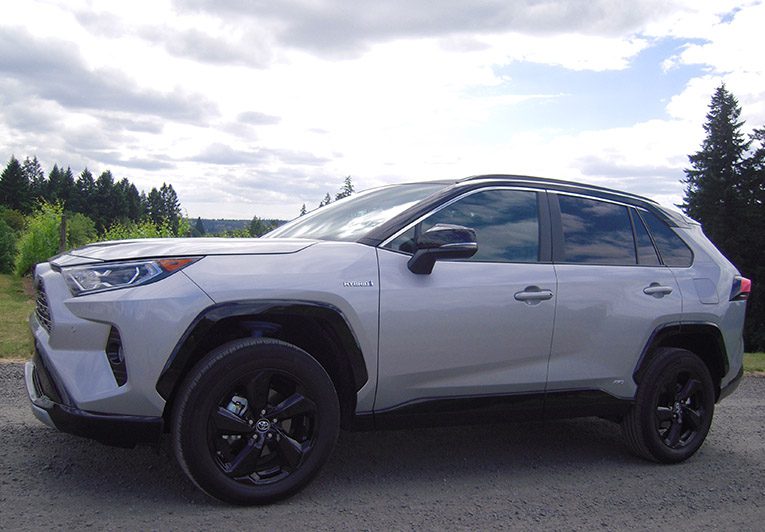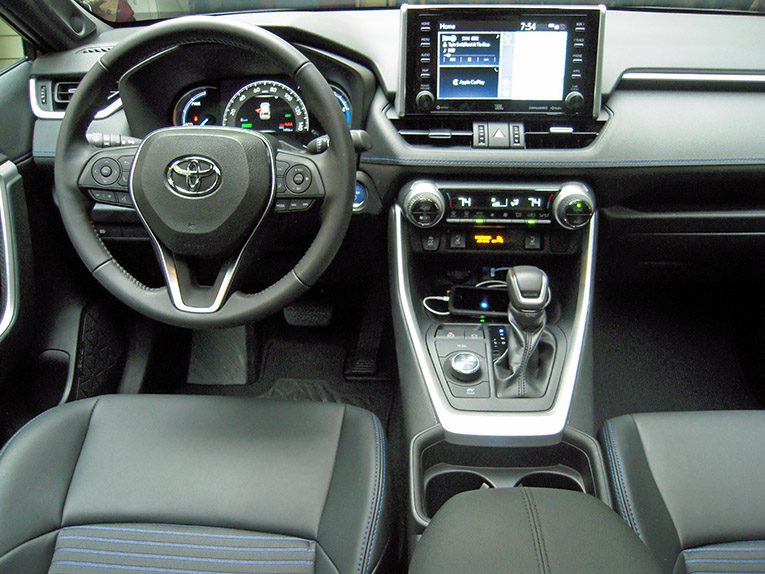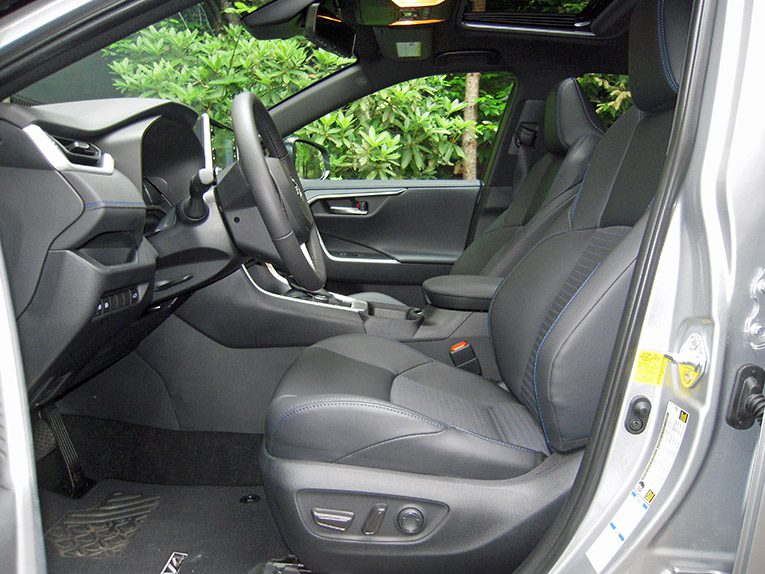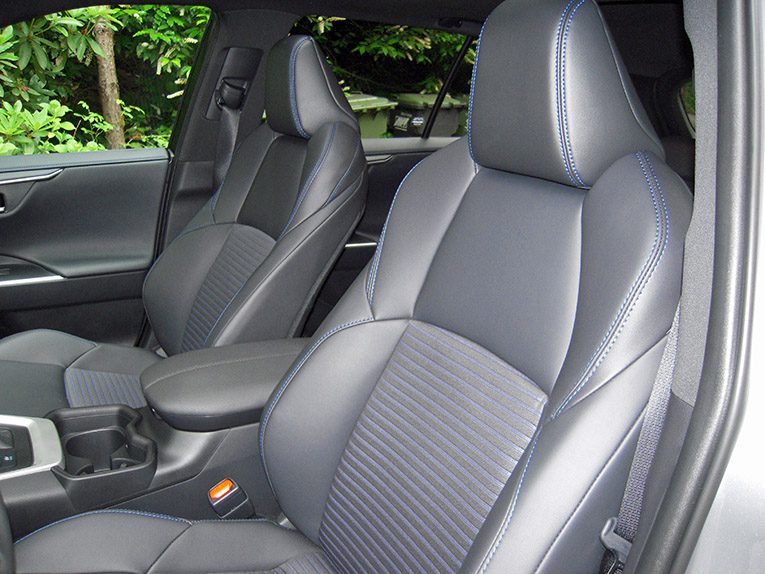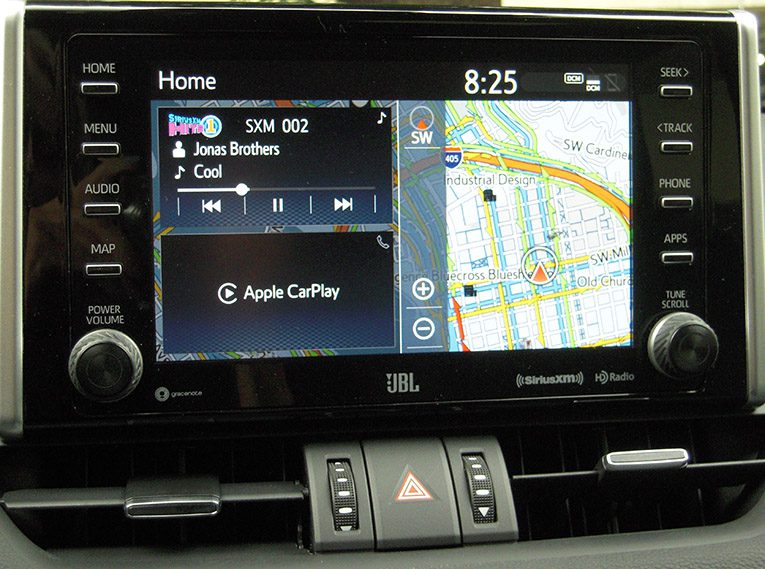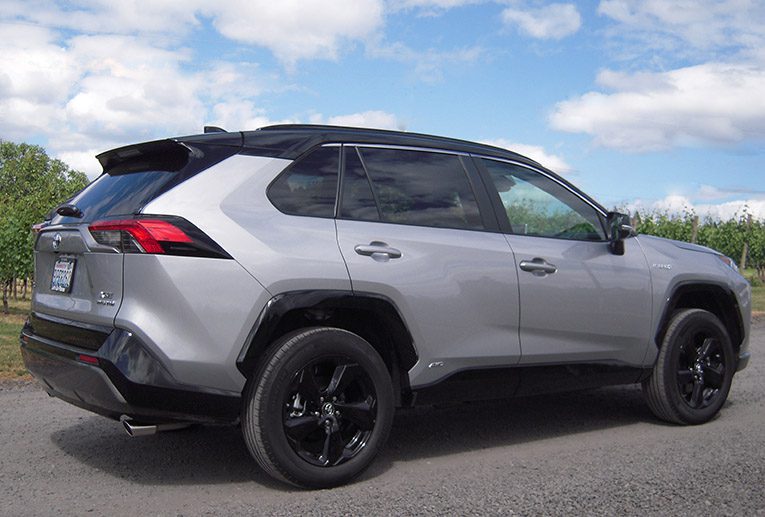The gas-powered and hybrid versions of the RAV4 are completely redesigned for 2019. And dare I say it—the new RAV4 now has some personality! All RAV4 models get updated exterior and interior styling, more power, improved fuel economy and upgraded tech.
The RAV4 was introduced to North American buyers in 1995 and started the compact crossover craze. It’s been a best-seller for Toyota, appealing to consumers who want the practicality of an SUV but with the ride, drivability and fuel economy of a smaller vehicle.
The five-passenger 2019 RAV4 Hybrid is available in four trims: LE, XLE, XSE and Limited. Starting prices range from $27,700 to $35,700. These are a bit high among all compact crossovers and SUVs, but only slightly higher than the gas-powered RAV4 with starting prices of $25,650 to $35,050. All-wheel-drive is standard.
The RAV4 Hybrid is powered by a 2.5-liter four-cylinder engine and an electric motor coupled with a continuously variable transmission. Total output is 219 horsepower and 163 pound-feet of torque. The engine makes noise when pressed but gets the job done. It’s peppy off the line and there’s enough power and acceleration for most driving situations; in fact, the Hybrid actually feels more athletic than its gas-powered sibling. Toyota says it can go from zero to 60 mph in 7.8 seconds. There’s little body roll when cornering.
As is usually the case with hybrids, braking feels different because of the regeneration. The pedal can have a squishy feel.
Visibility is good to the front but slightly hampered to the sides and rear because of the sloping window line.
Fuel efficiency is great for the class. EPA estimates for my tester are 41 mpg city and 38 mpg highway for a combined rating of 40. I got 39 mpg during my week with a mix of city and highway driving.
The older RAV4 models had a cheap-looking interior with lots of hard plastics. Now it’s way more upscale. The cabin is roomy with comfortable seats and good legroom for adults in both rows of seating; however, taller adults may wish for more headroom. Materials are nicer than the previous model. Most are soft touch and varying textures add a nice design touch. Controls are sensibly organized, but there’s a bit of a stretch for the driver to reach the audio tuning knob. Engine and road noise are fairly noticeable in the cabin.
The infotainment system has a large display (seven or eight inches, depending on the trim) that’s easy to read but the graphics look a little old school. You can use the touchscreen or surrounding buttons and knobs for commands. The system responds quickly to touch and voice commands. Apple CarPlay is standard but there’s still no Android Auto.
Standard features include cloth upholstery, dual-zone automatic climate control, six-way adjustable driver’s seat, four-way adjustable passenger seat, seven-inch touch-screen infotainment system, six-speaker audio system, Bluetooth, USB port, Wi-Fi hot spot, Apple CarPlay and Amazon Alexa.
Standard driver assistance features include forward collision warning, automatic emergency braking, pedestrian detection, automatic high beams, adaptive cruise control, traffic sign recognition, a rearview camera, lane departure warning, lane keep assist, and lane tracing assist, which keeps the vehicle centered in the lane.
Available features include proximity key entry, push-button start, surround-view parking camera, leatherette upholstery, eight-way power-adjustable driver’s seat, heated and ventilated front seats, heated rear seats, leather-wrapped steering wheel and shift knob, heated steering wheel, moonroof, seven-inch digital driver-information display, eight-inch infotainment system, navigation, 11-speaker JBL stereo, satellite radio, wireless charging, four additional USB ports, rain-sensing windshield wipers, auto-dimming rearview mirror, and a universal garage door opener.
Available driver assistance technologies include blind spot monitoring, rear cross traffic alert, and rear cross traffic braking.
Cargo space is good for the class. The RAV4 Hybrid has 37.5 cubic feet of cargo space, same as the gas-powered model, with both rows of seating in place. The low floor makes it easy to load and unload. A power liftgate and hands-free liftgate are available. There are a number of cubbies in the cabin to store small items.
Many Toyota buyers say they keep coming back to the brand because of its reliability. The 2019 RAV4 Hybrid gets a good predicted reliability rating of four out of five from J.D. Power.
The good:
Great fuel efficiency for the class
Costs only a little more than the gas-powered model
Upgraded interior
Lots of standard safety features
Excellent cargo space for the class
Good reliability
The not-so-good:
Costs more than most compact crossovers
Brakes can feel squishy
No Android Auto
Pricing info:
My tester starts at $33,700. Entune 3.0 Premium Audio with Dynamic Navigatin and JBL with Clari-Fi audio system is $1,620 and includes 11 speakers including subwoofer, eight-inch touchscreen, AM/FM/HD Radio, auxiliary port, USB port, 4 USB charging ports, navigation, voice recognition, Bluetooth, Siri Eyes Free, Apple CarPlay, Satellite radio, and Toyota Connected Services. The XSE Technology Package is $640 and adds Intelligent Clearance Sonar with Rear Cross-Traffic Braking, and wireless smartphone charging with charge indicator light. Carpet floor mats and cargo matt are $269. Delivery fee is $1,095 bringing the grand total to $37,324.
Bottom line:
The redesigned 2019 Toyota RAV4 Hybrid has a more aggressive look and peppier performance than the older versions. Its great fuel economy, smooth ride and numerous standard driver assistance technologies make it worth a look.



